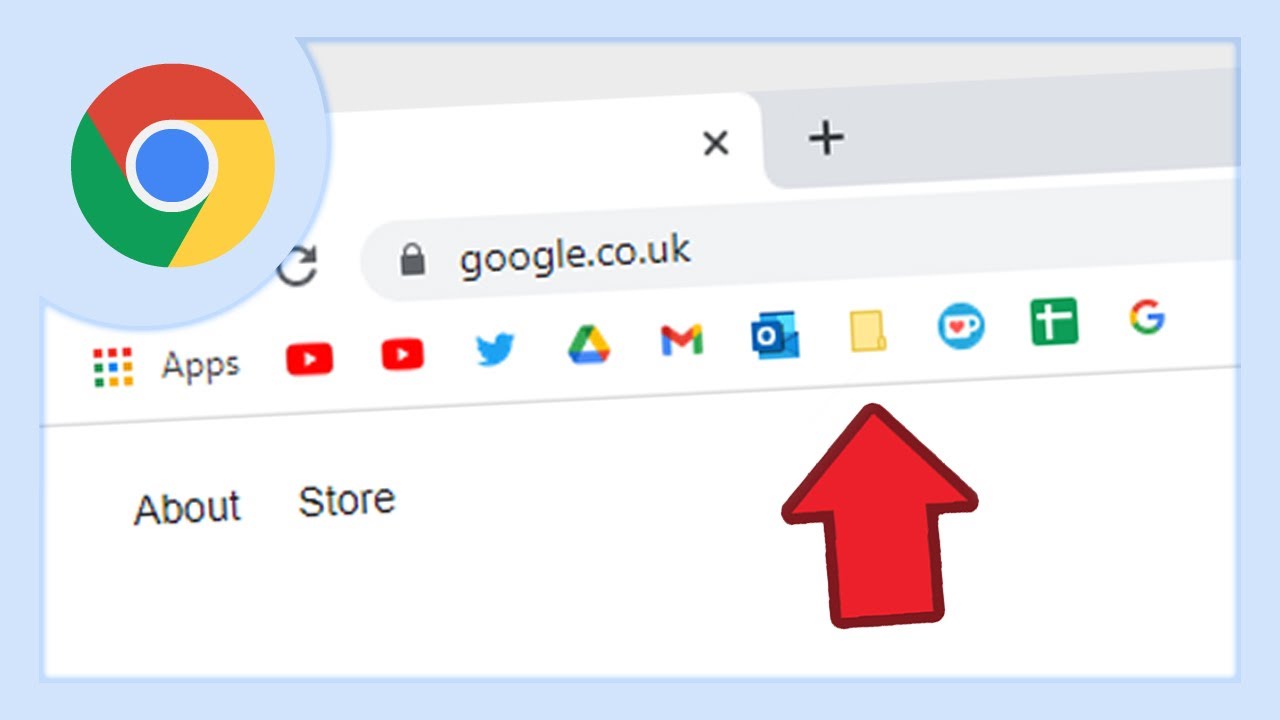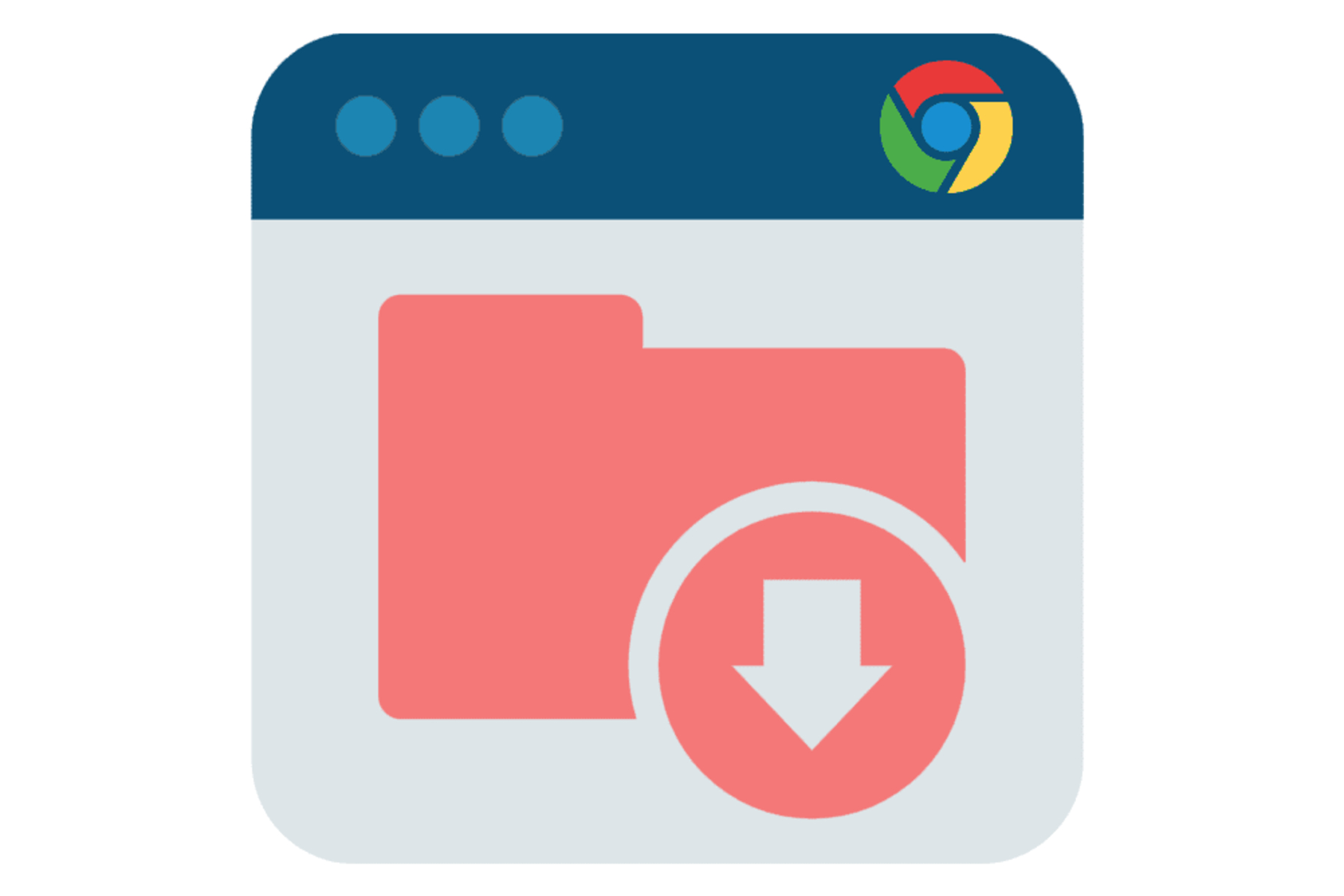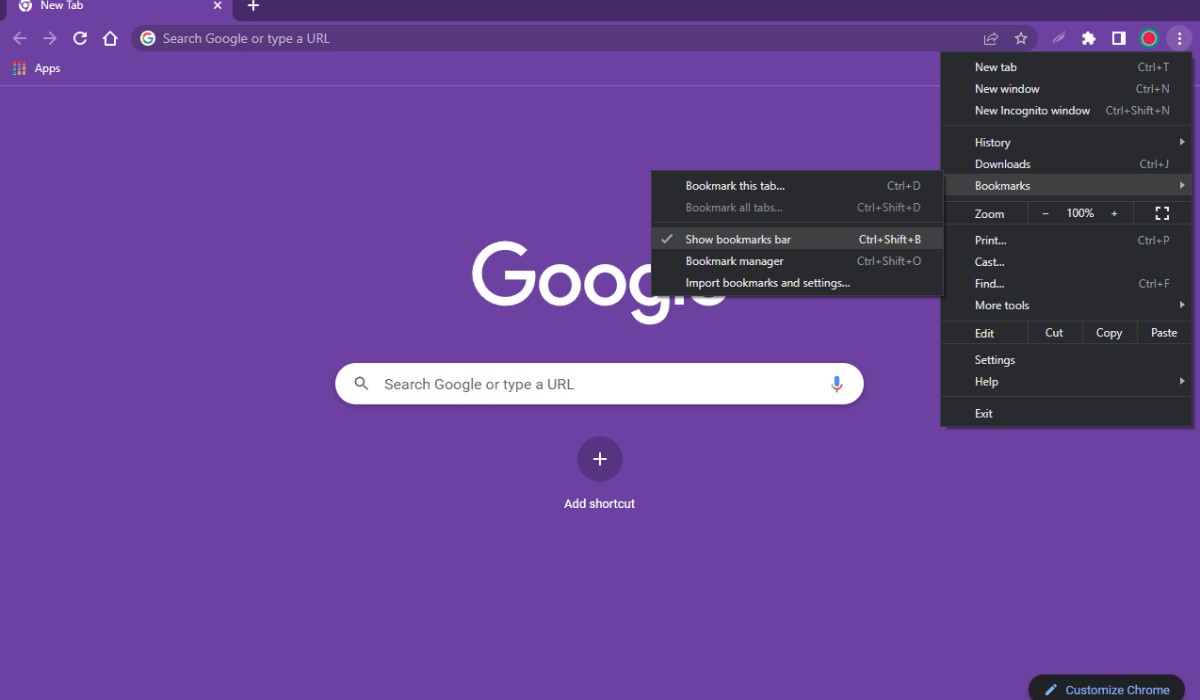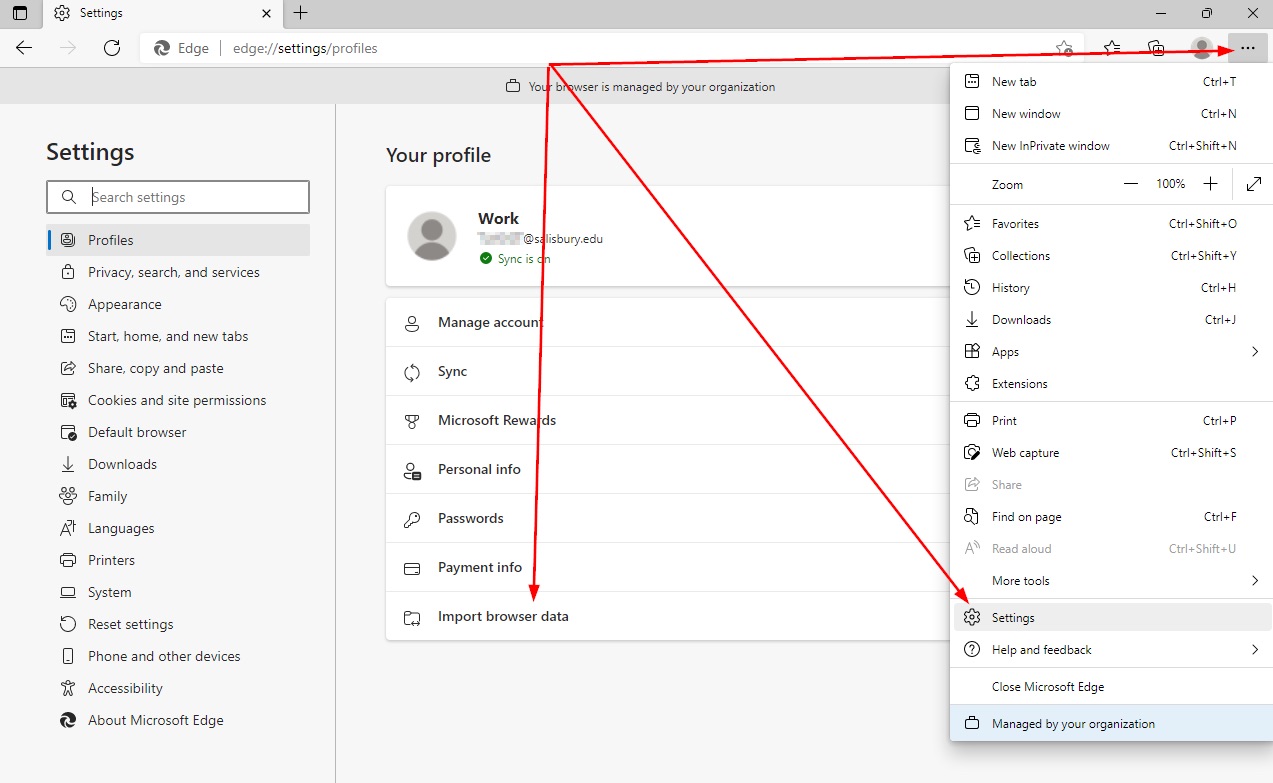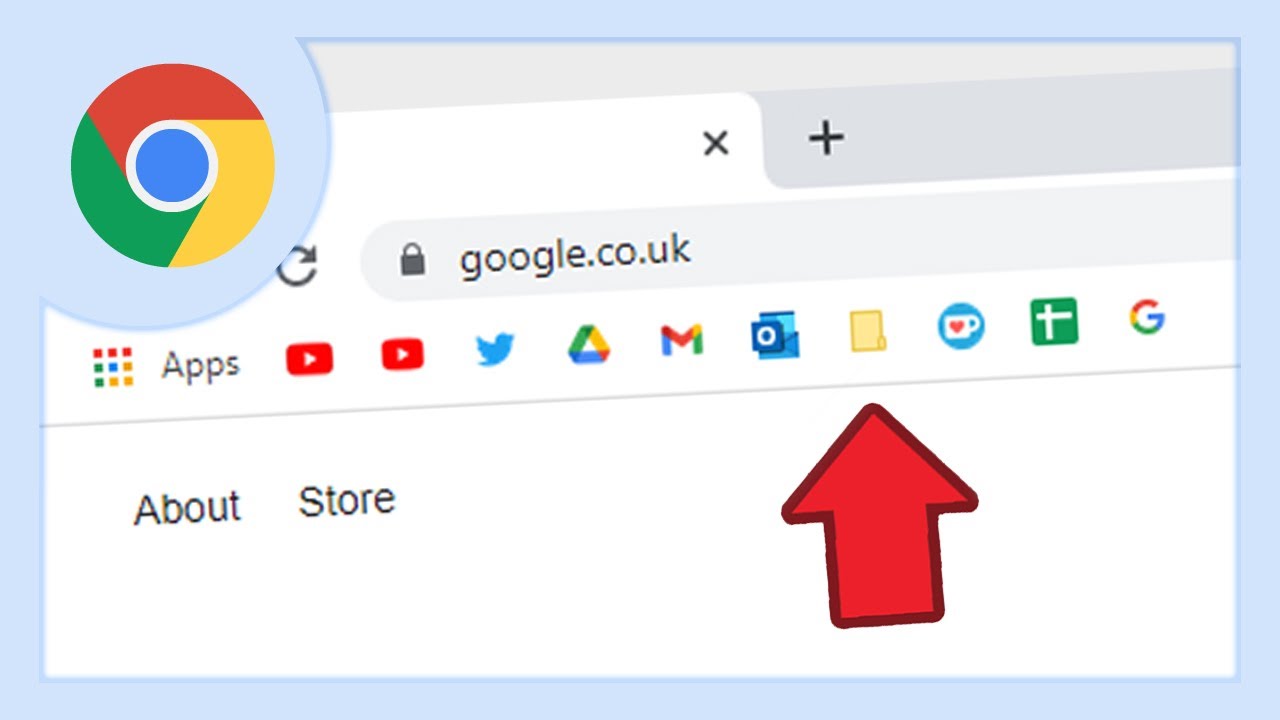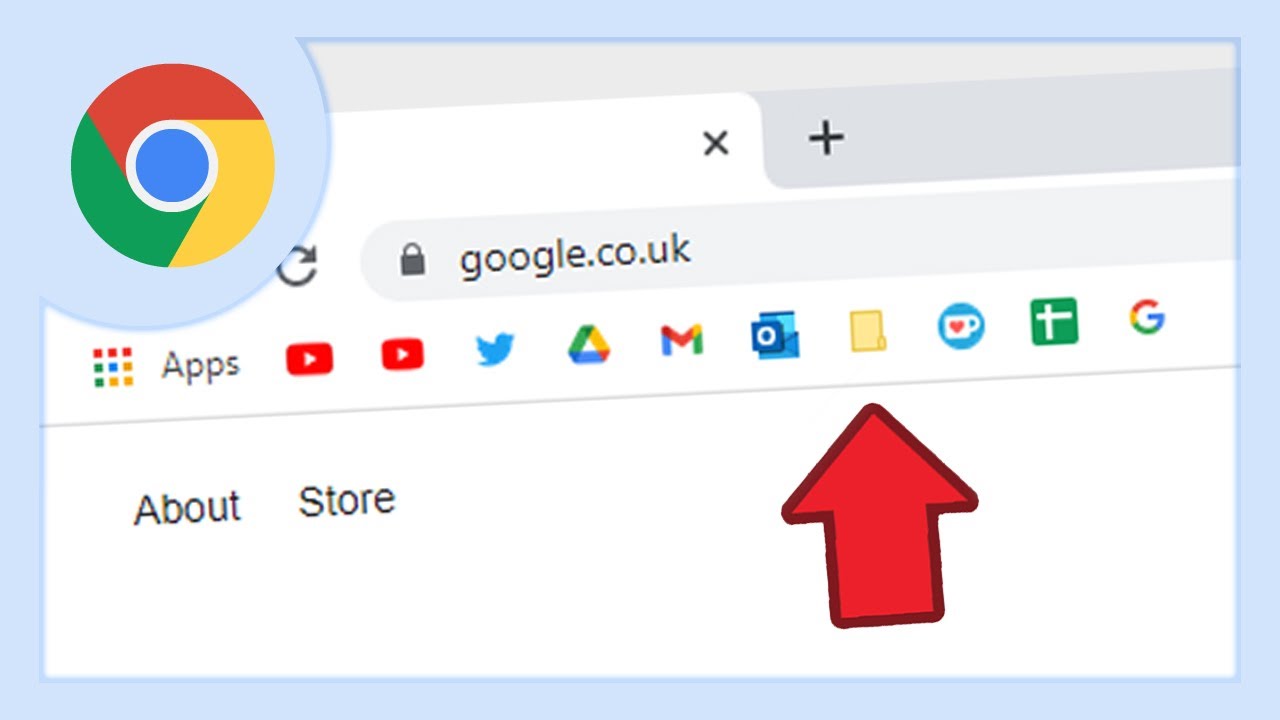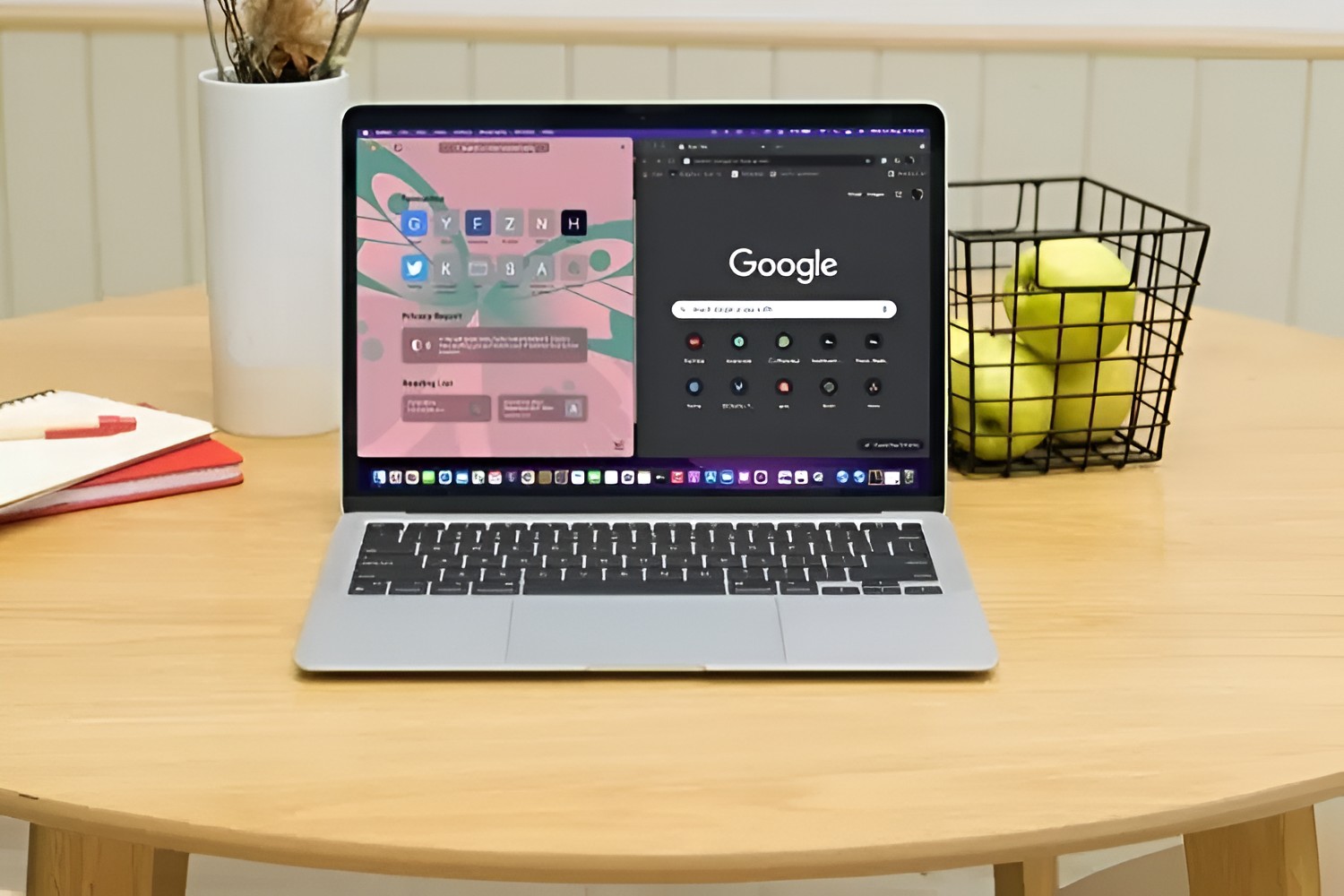Introduction
Chrome, the widely used web browser developed by Google, offers a plethora of features to enhance user experience. One such feature is the ability to save and organize favorite websites, commonly referred to as bookmarks. These bookmarks serve as a convenient way to revisit frequently accessed websites with just a click, eliminating the need to remember or search for URLs each time.
In this article, we will delve into the art of organizing favorites in Chrome. Whether you're a casual internet user or a seasoned web surfer, mastering the art of organizing favorites can significantly streamline your browsing experience. By leveraging the built-in tools and functionalities of Chrome, you can effortlessly categorize, sort, and manage your favorite websites, making them easily accessible whenever the need arises.
So, if you've ever found yourself drowning in a sea of unorganized bookmarks or struggling to locate a specific website amidst the clutter, fear not. By the end of this guide, you'll be equipped with the knowledge and skills to transform your chaotic collection of bookmarks into a well-organized and easily navigable resource. Let's embark on this journey to unlock the full potential of Chrome's bookmark management capabilities and take control of your browsing experience.
Understanding Chrome Favorites
Chrome favorites, commonly known as bookmarks, are a fundamental feature that allows users to save and revisit their preferred websites with ease. When you come across a website that you want to revisit later, you can simply bookmark it, creating a shortcut for quick access. This eliminates the need to remember or manually type in the website's URL each time you wish to visit it.
In Chrome, bookmarks are typically represented by a star icon located in the address bar. Clicking on this star instantly saves the current webpage to your list of favorites. Additionally, Chrome provides the option to organize bookmarks into folders, enabling users to categorize and manage their favorite websites efficiently.
By default, Chrome displays the bookmarks bar, which is located just below the address bar. This bar serves as a convenient space to store frequently accessed bookmarks, providing quick access to essential websites without the need to navigate through multiple menus.
Furthermore, Chrome offers a dedicated Bookmarks Manager, accessible through the browser's settings. This feature allows users to view, edit, and organize their bookmarks effectively. Within the Bookmarks Manager, users can create new folders, rename bookmarks, and delete unwanted entries, providing full control over their collection of favorites.
Understanding Chrome favorites goes beyond mere bookmarking; it involves harnessing the full potential of this feature to streamline your browsing experience. Whether it's saving articles for later reading, bookmarking reference websites, or organizing a list of favorite online stores, mastering the art of managing Chrome favorites can significantly enhance productivity and convenience.
In the next sections, we will explore the various techniques and best practices for organizing and managing favorites in Chrome, empowering you to take full advantage of this powerful feature. Let's dive into the world of Chrome bookmarks and unlock their potential to revolutionize the way you browse the web.
Organizing Favorites in Chrome
Organizing favorites in Chrome is a pivotal aspect of optimizing your browsing experience. With an ever-growing list of bookmarked websites, it's essential to establish a systematic approach to categorize and manage your favorites effectively. By implementing efficient organization techniques, you can streamline access to your preferred websites and eliminate the frustration of sifting through a cluttered list of bookmarks.
Utilizing the Bookmarks Bar
The bookmarks bar, located just below the address bar in Chrome, serves as a valuable tool for quick access to frequently visited websites. By strategically placing essential bookmarks on the bookmarks bar, you can create a convenient shortcut for immediate access. This feature is particularly useful for storing links to your most frequently accessed websites, such as email services, news portals, or productivity tools.
Creating Folders for Categorization
Chrome allows users to create folders within their bookmarks, enabling the categorization of favorite websites based on specific themes or interests. By creating folders such as "News," "Work-related," "Entertainment," or "Shopping," you can effectively group related bookmarks together. This categorization simplifies navigation and ensures that your bookmarks remain organized and easily accessible.
Sorting and Renaming Favorites
As your collection of bookmarks grows, it becomes essential to maintain order within your folders. Chrome provides the option to sort bookmarks alphabetically or by the date they were added. This functionality allows you to arrange your bookmarks in a structured manner, making it easier to locate specific websites. Additionally, renaming bookmarks with descriptive titles can further enhance organization, providing clarity and context for each saved website.
Deleting and Managing Favorites
Regularly reviewing and managing your bookmarks is crucial to maintaining an organized collection. Chrome's Bookmarks Manager offers a straightforward interface for deleting unwanted bookmarks and managing folder structures. By periodically decluttering your list of favorites and removing obsolete entries, you can ensure that your bookmarks remain relevant and efficiently organized.
Embracing Synchronization Across Devices
Chrome's synchronization feature allows you to access your bookmarks across multiple devices seamlessly. By signing in to your Google account, your bookmarks are synchronized, ensuring that your organized collection is accessible from any device with Chrome installed. This synchronization eliminates the need to recreate bookmarks on each device, providing a consistent browsing experience across platforms.
By implementing these strategies and leveraging Chrome's built-in features, you can transform your collection of favorites into a well-organized and easily navigable resource. Organizing favorites in Chrome is not merely a task; it's a gateway to enhancing productivity and efficiency in your online activities. With a structured approach to managing bookmarks, you can reclaim control over your browsing experience and unlock the full potential of Chrome's bookmark management capabilities.
Creating Folders for Favorites
Creating folders for favorites is a fundamental strategy for efficient bookmark organization in Chrome. By categorizing your favorite websites into distinct folders, you can streamline access to specific types of content and maintain a well-structured collection of bookmarks.
To create a folder for favorites in Chrome, follow these simple steps:
-
Accessing the Bookmarks Manager: Start by accessing the Bookmarks Manager in Chrome. You can do this by clicking on the three-dot menu icon in the top-right corner of the browser window, selecting "Bookmarks," and then choosing "Bookmark Manager" from the dropdown menu.
-
Creating a New Folder: Within the Bookmarks Manager, locate the "Organize" option, which typically appears as a button or a dropdown menu. Select this option to reveal the "Add new folder" feature. Click on "Add new folder" and provide a name for your new folder.
-
Naming the Folder: When naming your folder, consider using descriptive and intuitive titles that reflect the content it will contain. For example, if you plan to store bookmarks related to technology news, you might name the folder "Tech News" or "Technology Updates."
-
Organizing Bookmarks into Folders: Once the folder is created, you can begin populating it with relevant bookmarks. To do this, simply drag and drop existing bookmarks into the newly created folder within the Bookmarks Manager. Alternatively, when bookmarking a new website, you can select the desired folder as the destination for the bookmark.
-
Subfolders for Further Categorization: For a more granular approach to organization, Chrome allows the creation of subfolders within existing folders. This feature is particularly useful for refining the categorization of bookmarks. For instance, within a "Tech News" folder, you could create subfolders for different technology domains such as "Gadgets," "Software," or "Industry Trends."
By creating folders for favorites and utilizing subfolders where necessary, you can effectively structure your bookmarks based on specific themes, interests, or purposes. This approach not only simplifies the management of bookmarks but also enhances the overall browsing experience by providing quick and intuitive access to relevant content.
In essence, creating folders for favorites in Chrome empowers users to curate a personalized and well-organized collection of bookmarks, ensuring that essential websites are easily accessible and neatly categorized. This systematic approach to bookmark organization lays the foundation for a clutter-free and efficient browsing experience, allowing users to navigate their favorite online destinations with ease.
Sorting and Renaming Favorites
As your collection of bookmarks grows, maintaining order within your folders becomes increasingly important. Chrome provides intuitive tools to assist in this endeavor, allowing users to sort bookmarks alphabetically or by the date they were added. This functionality enables you to arrange your bookmarks in a structured manner, making it easier to locate specific websites within your collection.
Sorting bookmarks alphabetically can be particularly beneficial when dealing with a large number of favorites. By organizing bookmarks in alphabetical order, you create a systematic arrangement that simplifies the process of finding a specific website. This approach eliminates the need to manually scan through an unsorted list, saving time and effort when accessing saved websites.
Furthermore, Chrome allows users to rename bookmarks with descriptive titles, enhancing the organization and clarity of their collection. When bookmarking a website, the default title may not always provide sufficient context or clarity. Renaming bookmarks with descriptive and recognizable titles can significantly improve the browsing experience. For example, instead of a generic title like "Homepage," you could rename the bookmark to "Tech News – Latest Updates," providing clear insight into the content of the website.
Renaming bookmarks also facilitates quick identification and retrieval of specific websites, especially when revisiting saved pages after an extended period. By incorporating relevant keywords or descriptors into the bookmark titles, users can create a more intuitive and user-friendly browsing environment.
In addition to sorting and renaming individual bookmarks, Chrome's Bookmarks Manager offers the flexibility to manage entire folders, allowing for bulk sorting and renaming operations. This feature is particularly useful when organizing a large number of bookmarks within specific categories or themes.
By leveraging the sorting and renaming capabilities in Chrome, users can maintain a well-organized and easily navigable collection of favorites. This systematic approach not only enhances the efficiency of accessing saved websites but also contributes to an overall streamlined browsing experience.
In essence, sorting and renaming favorites in Chrome is a fundamental aspect of effective bookmark management. By implementing these practices, users can optimize their bookmark collection, ensuring that each saved website is easily identifiable and readily accessible whenever needed.
Deleting and Managing Favorites
Regularly reviewing and managing your bookmarks is crucial to maintaining an organized collection in Chrome. The process of deleting and managing favorites ensures that your bookmark list remains relevant, uncluttered, and aligned with your current browsing habits.
Removing Unwanted Bookmarks
Chrome's Bookmarks Manager provides a straightforward method for deleting unwanted bookmarks. By accessing the Bookmarks Manager, users can easily navigate through their bookmarked websites and identify entries that are no longer relevant or necessary. With a simple right-click on the unwanted bookmark, users can select the "Delete" option, effectively removing the entry from their collection.
Organizing Folder Structures
Managing favorites in Chrome extends beyond individual bookmarks; it encompasses the organization of entire folder structures. Users can create, rename, and delete folders within the Bookmarks Manager, allowing for a comprehensive approach to bookmark management. By reorganizing folders and subfolders, users can adapt their bookmark collection to align with evolving interests and priorities.
Reviewing and Updating Bookmarks
Periodically reviewing and updating bookmarks is essential to ensure that your collection remains current and reflective of your browsing preferences. As browsing habits evolve, certain bookmarks may become obsolete or less relevant. By revisiting and evaluating your bookmarked websites, you can identify outdated entries and remove or update them accordingly.
Utilizing Bookmark Search and Filters
Chrome's Bookmarks Manager offers robust search and filter functionalities, enabling users to quickly locate specific bookmarks based on keywords, URLs, or titles. By utilizing these search and filter tools, users can efficiently manage their favorites, identify duplicate entries, and streamline their bookmark collection with ease.
Syncing and Backing Up Bookmarks
Chrome's synchronization feature ensures that your organized collection of favorites is accessible across multiple devices. By signing in to your Google account, your bookmarks are synchronized, providing a seamless browsing experience across various platforms. Additionally, users can leverage Chrome's backup options to safeguard their bookmark collection, ensuring that valuable favorites are preserved in the event of data loss or device migration.
By actively engaging in the deletion and management of favorites, users can maintain a well-organized and relevant collection of bookmarks in Chrome. This proactive approach not only declutters the browsing experience but also ensures that saved websites align with current interests and preferences. Effective bookmark management empowers users to curate a personalized and efficient browsing environment, where essential websites are readily accessible and seamlessly integrated into their online activities.
Conclusion
In conclusion, mastering the art of organizing favorites in Chrome is a transformative journey that empowers users to take full control of their browsing experience. By understanding the intricacies of Chrome favorites and leveraging the built-in tools and functionalities, users can curate a well-organized and easily navigable collection of bookmarks.
The process begins with a fundamental understanding of Chrome favorites, recognizing them as more than just saved URLs. Instead, they serve as personalized shortcuts to preferred websites, offering convenience and efficiency in accessing online content. By embracing the bookmarks bar, creating folders for categorization, and utilizing synchronization across devices, users can establish a seamless and consistent browsing environment tailored to their preferences.
Creating folders for favorites emerges as a pivotal strategy, allowing users to categorize websites based on specific themes, interests, or purposes. This approach not only simplifies the management of bookmarks but also enhances the overall browsing experience by providing quick and intuitive access to relevant content.
Furthermore, sorting and renaming favorites play a crucial role in maintaining an organized collection. By arranging bookmarks in a structured manner and providing descriptive titles, users can streamline the process of finding and accessing specific websites within their collection.
The proactive management of favorites, including the deletion of unwanted bookmarks, organizing folder structures, and reviewing and updating bookmarks, ensures that the bookmark list remains relevant and aligned with current browsing habits. Additionally, leveraging Chrome's search and filter functionalities, as well as synchronization and backup options, contributes to a comprehensive and efficient approach to bookmark management.
Ultimately, the art of organizing favorites in Chrome transcends mere bookmarking; it embodies the empowerment of users to curate a personalized and efficient browsing environment. By implementing the strategies and best practices outlined in this guide, users can reclaim control over their browsing experience, ensuring that essential websites are readily accessible and seamlessly integrated into their online activities.
In essence, organizing favorites in Chrome is not merely a task; it's a gateway to enhancing productivity, efficiency, and enjoyment in the online realm. With a structured approach to managing bookmarks, users can unlock the full potential of Chrome's bookmark management capabilities, revolutionizing the way they browse the web.







